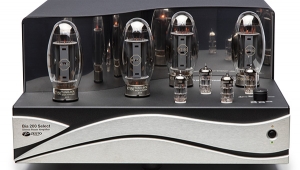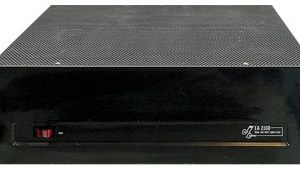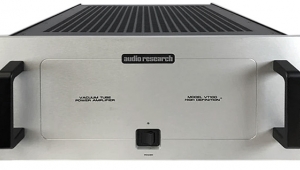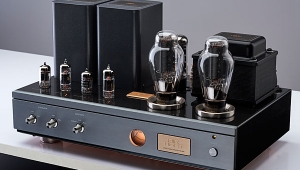| Columns Retired Columns & Blogs |
Lamm ML2.1 monoblock power amplifier
One of my best friends is a serious jazz collector with a side interest in good replay gear. The last time we got together over a meal, he asked, "What do you think is really the most important component in an audio system?" He might have added "these days": It's a subject we come back to from time to time.
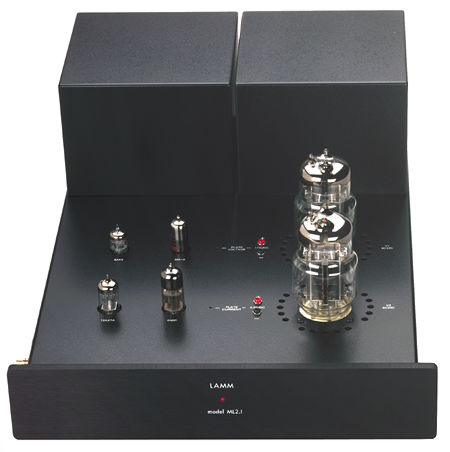
Because I meant my response in fun, I didn't think long. "The amplifier," I answered—and then, for the hell of it, I added, "By far."
There was a time in my life when I thought the speakers were most important. And, of course, there was a time when I thought the source was most important. Now it was something else's turn. Simple as that.
But only after I spoke did I realize that I actually meant what I'd said.
I meant it because, by that time, the Lamm ML2.1 ($29,290/pair) had convinced me it was so. The Lamm amplifier had also reminded me that, while audio enthusiasts make good reviewers, audio nymphomaniacs do not: People who are prone to writing or even thinking that such-and-such a thing is the best—I've been guilty of it myself at times—are bound to be pulled up short, just as the ML2.1 pulled me up short. Now I have to rethink everything. John Atkinson, please revisit all my prior component recommendations and lower their ratings some.
He who made the Lamm
Vladimir Lamm, who designs and assembles all of his company's products, emigrated from the Soviet Union in 1987. Before that, he received training in electronics at the university level—during which time he also played percussion in a symphony orchestra—and worked as an engineer for the Soviet military and space programs, as well as for one of Russia's most-well-known producers of consumer electronics.
During that time, Vladimir Lamm continuously refined his thoughts on the design of audio electronics, and at the same time developed a unique model of the human hearing mechanism, based on his research into psychoacoustics. This process brought him to a radical conclusion: There is indeed a strict set of predictable, observable, and repeatable design parameters that correlate with the way people do or do not enjoy reproduced music. Not only that, but these data are hierarchical, in that certain design approaches are consistently more or less pleasing to most listeners. (Lamm observes that single-ended topology represents the pinnacle of amplifier design in this regard.) Lamm has refined his theories to the point where he no longer finds it necessary to design by ear. "I design by pencil," he says. "I don't need to listen. Using words to describe sound is not for me but for the experts." Even through his accent, I could hear the derision in that last word. Oh well.
In many ways, the ML2.1 is the culmination of everything Vladimir Lamm has learned about audio amplification throughout his career. It uses a single output tube, the Russian-designed 6C33C, operating in single-ended mode to drive a loudspeaker load with approximately 18W of power. The large and somewhat fleshy-looking 6C33C tube, which is an indirectly heated triode, was chosen for its extremely low internal impedance: about 80 ohms, which is considerably lower than most other audio output triodes. This allows the use of a much lower plate voltage than you might expect—175V—and, given an output transformer that's up to the task, it can be used to drive a primary with as much as 300 milliamps of current, which is a great deal more than average. In the case of the ML2.1, that transformer is an enormous custom design that is also enormously expensive to make, or so I'm told.
In Lamm's own words, the ML2.1 is like any single-ended amplifier, except in its execution. A key difference is the serious amount of regulation designed into the amp. When I first saw an ML2.1, at the Home Entertainment 2004 East show, I assumed it to be a single-ended amp using two output tubes in parallel. As it turns out, the second 6C33C tube per channel serves only as a voltage regulator for the first: Without it, fluctuations in the mains voltage could result in distortion and tube damage on the one hand, or less than optimal output power on the other.
The ML2.1's input stages, which comprise a 12AX7 dual triode for voltage gain and a Russian 6N6P driver tube, are also fully regulated—again, with tubes. Here, a 5651 voltage reference tube creates a reference signal from the input, and a 6AK5 miniature pentode continuously compares the output signal with the reference, and corrects the former as necessary by amplifying the difference. Incidentally, the amplifier's working voltages are supplied by an enormous toroidal transformer encased, like a bug in amber, in a proprietary damping resin so that buzzes and vibrations won't obscure or obliterate subtle musical details. Beyond that, the power supply is actually quite simple, using a solid-state rectifier bridge and a combination of chokes and capacitors to smooth out all the wrinkles.
A look inside the ML2.1 reveals a neatly and solidly built amplifier, but nothing terribly exotic—again, apart from the sheer enormity of the mains and output transformers. Most of the amplifier exists on a single large circuit board, excepting a very large power-supply capacitor, a rather pedestrian Hammond power-supply choke, various connectors, jacks, and binding posts, and the sockets for the two nipple tubes. But the board is double-sided, and it's difficult to get a clear idea of the circuit architecture, apart from the fact that some feedback is apparently employed. Beyond that, all I can offer is the admittedly dull observation that the ML2.1 appears at once to be both simple and complex.
From the outside, the ML2.1 looks merely simple—but well made. The six tubes have lots of room to spread out, and the two big trannies sit side by side under matching black boxes. The metalwork is thick enough to resist flexing under the strain of its heavier parts—it's sad how many expensive amps aren't made this well—but no thicker. The Lamm bespeaks quality, but subtly.
I was also impressed with the professional quality of the Lamms' packaging and documentation. The former is a nicely made wood crate for each amplifier with glued-in foam bumpers; the latter consists of a few separate warning documents plus a thick, clearly written operating manual that covers in generous detail everything you might conceivably need to know about the ML2.1. I can't think of a single company in perfectionist audio that would not benefit from this example.
Installing the ML2.1s was a straightforward and uneventful procedure, notwithstanding the Lamms' weight (70 lbs each) and the manual's frequent admonitions against carelessness. Although 6C33C tubes are still being made, Vladimir Lamm builds his amps using New Old Stock output tubes (he says he suspects that the design was cheapened after 1985), each one hand-tested and labeled for its precise destination. Consequently, either the owner or the person who installs the ML2.1 must check and, if necessary, adjust the plate voltage and plate current. This is easy to do, but requires a high-quality true RMS multimeter. (Lamm recommends the Fluke 87 or equivalent; I borrowed one from Stereophile's tool chest.)
Each ML2.1 has a pair of input jacks: an RCA for unbalanced operation, and an XLR for...well, for unbalanced operation. Because balanced operation isn't really an option in an amp of this sort, the input circuitry addressed by the XLR is only quasi-balanced. Lamm says he provides the jacks merely for the convenience of users who have that sort of cable, and not with any claims of improved performance.
At the other end, three pairs of chunky binding posts are provided, for operation into loads of 4, 8, and 16 ohms. The rear-mounted power switch addresses a protection circuit that begins by powering all the tube heaters; then, two minutes later, after the caps have charged up and the tubes have warmed up a little, a hefty relay kicks in and the plates see their respective rail voltages. This system worked perfectly every time; not once did I hear a single buzz, hum, burp, brap, or bang. Nor did the plate voltage or plate current—which I tended to check weekly—ever drift to a significant degree.
- Log in or register to post comments
